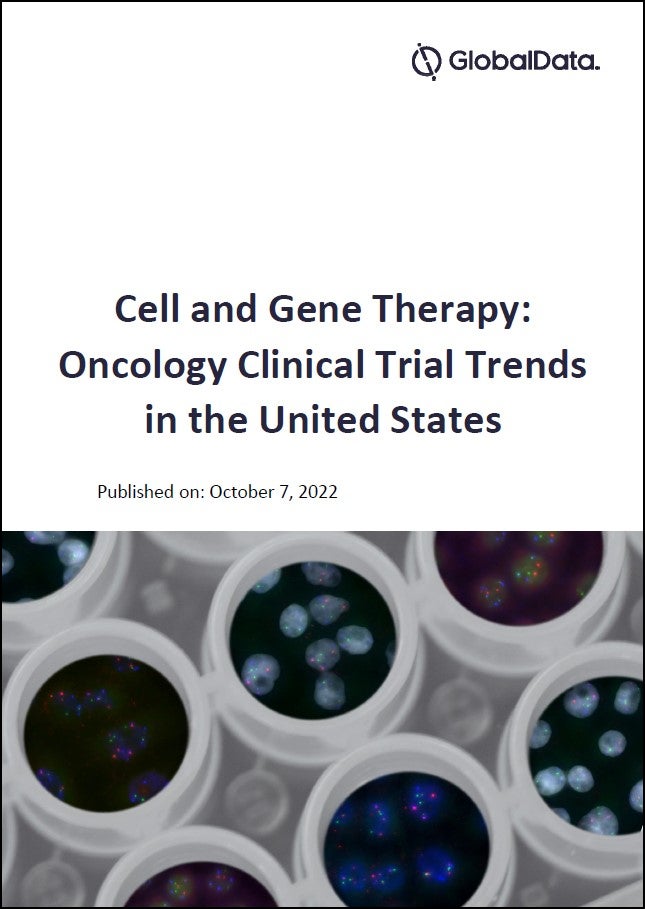- High mortality and poor existing options result in widespread uptake
- Soliris price point and some payer pushback make replacement ideal
- Experts confident in approval given rare indication and Phase II results
Omeros’ (NASDAQ:OMER) narsoplimab in hematopoietic stem cell transplant-associated thrombotic microangiopathies (HSCT-TMA) will easily replace Alexion Pharmaceuticals’ (NASDAQ:ALXN) Soliris (eculizumab) as the current off-label standard of care (SOC) when approved, experts said.
Soliris has a response rate of 50% or less in patients and can cause infection, making narsoplimab a much more attractive option, experts said. Soliris has only been examined in retrospective studies so far, while narsoplimab posted strong registrational Phase II (NCT02222545) efficacy and safety results, they noted. Soliris’ costliness also had some physicians noting they are keen for a replacement.
How well do you really know your competitors?
Access the most comprehensive Company Profiles on the market, powered by GlobalData. Save hours of research. Gain competitive edge.

Thank you!
Your download email will arrive shortly
Not ready to buy yet? Download a free sample
We are confident about the unique quality of our Company Profiles. However, we want you to make the most beneficial decision for your business, so we offer a free sample that you can download by submitting the below form
By GlobalDataMarket uptake will be widespread because HSCT-TMA is associated with a high mortality and there are already poor clinical outcomes for patients with current forms of care, including Soliris, said experts. Narsoplimab can be administered to patients regardless of the reason for initial transplant. Patient co-morbidities linked to HSCT-TMA will also not negatively influence uptake, they said.
Besides the positive efficacy and safety results, the study’s composite primary endpoint is well-chosen and clinically relevant. In turn, FDA approval is likely, experts said. Narsoplimab has a 17 July PDUFA date.
GlobalData forecasts narsoplimab sales to reach $575m globally in HCST-TMA by 2027. The Phase II trial also tests the drug in atypical haemolytic uremic syndrome (aHUS) and thrombotic thrombocytopenia (TTP). It is also being assessed in a Phase III (NCT03608033) trial for immunoglobulin A nephropathy and is being evaluated in COVID-19 as part of the I-SPY platform study (NCT04488081).
Omeros, which has a market cap of $1.12bn, did not respond to a request for comment.
Comfortably displaces incumbent with strong safety profile
Narsoplimab will replace Soliris as a treatment for HSCT-TMA as it has a superior response rate in patients, experts agreed. Phase II data showed narsoplimab produced a 61% objective response rate (ORR) in the full analysis set of 28 patients (P<0.001) and a 74% ORR in the per-protocol group (n=23). Per-protocol patients underwent at least four weeks of treatment, with the trial designed to administer over eight weeks of treatment, and the full analysis set included patients who stopped treatment early.
While Soliris elicits a response in almost all aHUS patients, its activity in HSCT-TMA was lower than 50% in the 50 patients he has treated, said Dr Gianluigi Ardissino, paediatrician, Centre for aHUS Control, Prevention and Management, Milan, Italy. He would treat all new patients with narsoplimab over Soliris because of the higher response rate from the Phase II data, but would be reluctant to switch treatments for a patient on Soliris until any switching data was available. In the trial, patients who had used Soliris in the past three months were excluded. Soliris is approved for paroxysmal nocturnal haemoglobinuria (PNH) and aHUS, according to the FDA label.
Smaller retrospective studies of Soliris have shown a response rate of around 50%, said trial investigator Dr Nelson Leung, nephrologist, Mayo Clinic, Rochester, Minnesota. Soliris is being evaluated in a Phase II (NCT03518203) investigator-sponsored trial in HSCT-TMA, according to ClinicalTrials.gov.
Retrospective studies have shown an increased rate of infection associated with Soliris use, said Leung. One concern when using Soliris is the risk of meningitis infection, said Dr Johnathan Barratt, professor, Renal Medicine, Leicester General Hospital, UK. Barratt, who was a member of the Phase II trial’s academic leadership committee, recommends administering a meningococcal vaccine in order to prevent meningitis infection. While Ardissino has not vaccinated patients before, he has seen cases of meningitis in patients he has treated with Soliris. The drug’s FDA label warns against using Soliris in patients who have not been vaccinated against meningitis.
Narsoplimab’s safety profile looks to be well-tolerated and is not associated with meningitis infection, said Barratt, who has administered narsoplimab to a small number of patients. According to Phase II narsoplimab data, the most common adverse events (AEs) with narsoplimab were pyrexia (35.7%), diarrhoea (32.1%), vomiting (32.1%), nausea (25%), neutropenia (25%) and hypokalaemia (21.4%). Narsoplimab’s safety profile is superior to the safety profile for Soliris, experts noted.
Soliris’ price tag is also off-putting, Leung said, adding the annual cost of treatment can reach $1m in the US. Insurance coverage can be variable, he said, so physicians would be reassured by an approved product. While Soliris coverage is not an issue in Europe, it costs around EUR 4,000 for a 300ml vial of Alexion, Ardissino said, adding he usually doses adults with 1,200ml a week, depending on body weight, and then moves to a lower dose of 1,200ml every three weeks as a maintenance therapy.
Transplant cause irrelevant to administration, appropriate target group
Patients who present with TMA have a severe critical illness and can end up with organ and respiratory failure, leading to high mortality rates, said Dr Daniel Clark Files, pulmonologist, Wake Forest School of Medicine, Winston-Salem, North Carolina. Mortality rates are around 50% over six months, said Leung. Narsoplimab showed a median overall survival (MOS) of 274 days in the full analysis set and 361 days in the per-protocol group, which impressively supports uptake by patients and physicians, experts agreed.
Narsoplimab can be used with all TMA patients regardless of the reason for their transplant. Trial investigator Dr Alessandro Rambaldi, haematologist, University of Milan, Italy, explained he would give it to all patients with a well-established TMA diagnosis. The inclusion criteria of the trial were broad, allowing a wider clinical application, Leung said. The FDA would likely allow prior use of Soliris on the label when approved, so long as there was a sufficient wash-out period, Leung said.
Previous co-morbidities did not cause experts to become concerned about clinical utility and uptake because of the highly sick patient population being studied. In the trial, most patients had multiple comorbidities, including renal dysfunction (75%), neurological dysfunction (57.1%), Graft versus host disease (GVHD) (67.9%), pulmonary dysfunction (17.9%) and significant infection (85.7%). Once TMA develops, it becomes the dominant determination for the survival of the patient, Leung said, adding the sick trial population was representative of the disease and should give confidence to clinicians when treating patients with multiple comorbidities in the clinic.
Experts were also unconcerned by a patient’s use of other medications given the agent’s mechanism and the mortality rate associated with TMA. Because of the drug’s safety profile and the specificity of its mechanism, it will not interfere with any other commonly used drug in the transplant setting or any other setting, said Rambaldi. Narsoplimab is a complement inhibitor targeting mannan-binding lectin associated serine protease-2 (MASP-2). Inhibition of MASP-2 does not interfere with the classical complement pathway, which is a key part of the body’s immune response to infection, according to Omeros.
Trial design supports approval
The study’s primary endpoint of complete response, as agreed upon with the FDA according to an 11 July 2019 company media release, required an improvement in TMA markers (platelet count and lactate dehydrogenase) and in organ function (renal, pulmonary, gastrointestinal, or neurological). The endpoints were chosen because they are related to the pathogenesis of the disease, so improving these means effectively tackling the course of the disease, said Rambaldi. The endpoints also sought to contain clinical and laboratory markers to monitor the recovery of organ and respiratory function in patients, he said. The composite endpoint is due to TMA being a multiorgan disease where defects in the haematological parameters effect other organs, Leung said.
While estimates vary, TMA occurs in approximately 5–20% of HSCT patients, meaning the small trial size was appropriate given the rarity of the disease and the short life expectancy of patients.
Sean Rai-Roche is a Healthcare Reporter for Clinical Trials Arena parent company GlobalData’s investigative journalism team. A version of this article originally appeared on the Insights module of GlobalData’s Pharmaceutical Intelligence Center. To access more articles like this, visit GlobalData.










Related Company Profiles
Alexion Pharmaceuticals Inc
Omeros Corp